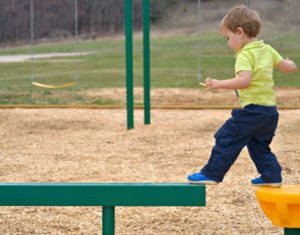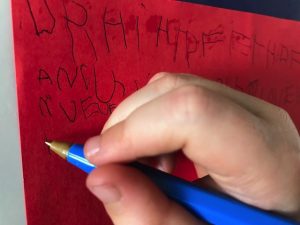What are motor skills?
Motor Skills are split into fine motor skills (little movements, e.g. cutting, writing) and gross motor skills (e.g. jumping, balancing). Children gradually develop their ability to use different groups of muscles across the first 8 years of life, starting with basic gross motor skills, e.g rolling, walking and crawling, and gradually developing their fine motor abilities to grasp items, pick things up, and eventually to cut, write and manage buttons.
Why do kids have difficulties with their motor skills?
In our team we work with children from babies to teenagers who have difficulty with their motor skills. This might be because of co-ordination, sensory input, muscles that are damaged or weak, or general delays in development.

A child may may have a diagnosis, such as Developmental Coordination Disorder or sensory integrative problems or you or your child’s teacher may have observed your child struggling during fine motor tasks (writing, holding small items, buttoning clothing, turning pages, eating with cutlery, cutting with scissors) and/or gross motor activities (throwing, balancing, kicking balls, or jumping).
Sometimes we work on developing motor skills and muscle strength to help improve children’s attention and concentration to other tasks. Strong, co-ordinated muscles assist children to sit at a desk, hold a pen, or sit comfortably on the floor to participate in games with their peers.
How do we assess motor skills?
When we want a lot of detail from our assessment of a child’s motor skills, we use a standardised assessment tool to help us. Standardised assessments are tests that are always done in exactly the same way, which has been tested on a big group of people, so that results can be compared. Standardised assessments tell us what skills a child is developing, compared to their peers of similar age.
One of the standardised assessments we use often in our clinics is called the BOT-2 (Bruininks-Oseretsky Test of Motor Proficiency, Second Edition). It can be used with people aged 4 – 21 years.
The BOT-2 measures hand and arm coordination, balance, mobility, and strength using fun activities. It provides a detailed picture of a child’s motor development, detailing motor strengths and weaknesses.
Why would you use the BOT-2 with my child?
Occupational Therapists and other professionals use the BOT-2 to help:
- Assess your child’s motor proficiency
- Support identification of motor strengths and weaknesses
- Support diagnosis of motor impairments

- Screen individuals who may have certain deficits in motor ability
- To assist in the development of therapy goals, planning interventions and evaluating change over time
The skills that the BOT-2 measures play an important role in everyday tasks. Learning about how a child performs these tasks can help to identify areas of strength and areas requiring additional support.
Once these needs have been identified we can work with teachers in kindergartens or schools, or help families at home to develop strategies and supports to improve skills and help children to participate in their everyday environments.

